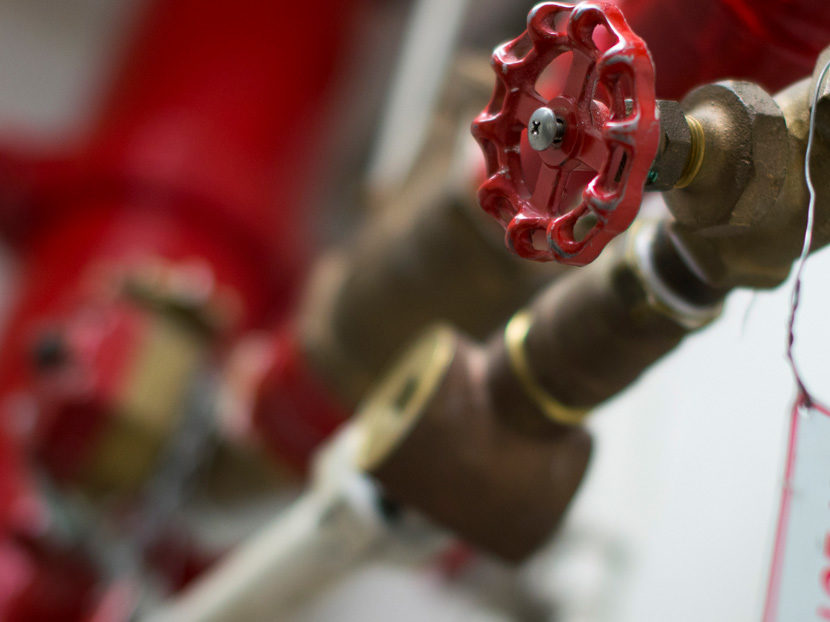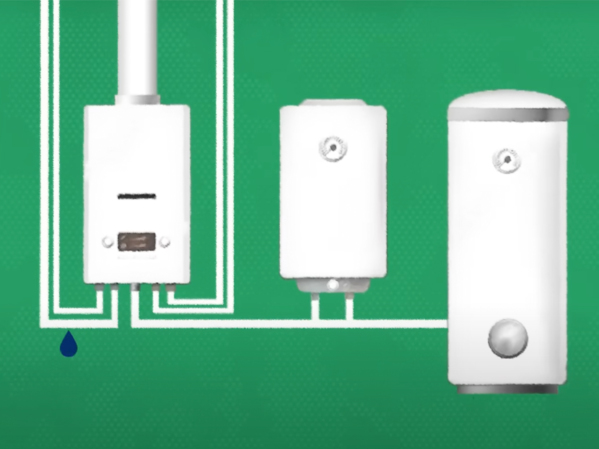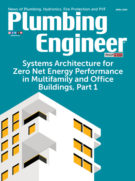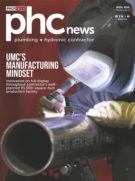Existing Systems: Reviewing the Design
Changes to the building, contents, operations and water supply often occur, affecting the adequacy of the existing fire sprinkler system.

Engineers are often asked to review the designs of existing fire sprinkler systems for a variety of reasons: a change to the facility, its occupancy or tenancy; a due diligence review for a prospective purchaser of the property; or an upgrade desired by the owner or mandated by local authorities or insurance interests.
Reviewing the design of existing sprinkler systems is now more complex than ever due to the almost constant evolution of design criteria incorporated into applicable standards, but determining the adequacy of an existing system can be accomplished by following a few simple steps.
The verification of appropriate design begins with a comprehensive examination of original assumptions. Design drawings, design basis reports and as-built or record drawings are good sources of information for conducting a review, if available.
Even with these documents, however, a limited site visit to verify that the installation is consistent with the documents will provide further verification. If the records are not available, a more comprehensive site visit is needed to determine the design of the installation with a clean-sheet approach and then conduct the review.
Over time, changes to the building, contents, operations and water supply often occur, affecting the adequacy of the existing fire sprinkler system. A conversation with the owner or operator of the facility can reveal if there were recent changes or additions to the building, its operations and contents since the time of the original system installation.
Engineers should carefully note the operations and contents of the building and determine the hazard classification of the building as defined by NFPA 13, Standard for the Installation of Sprinkler Systems. Subtle changes in building contents, such as the packaging of finished goods in storage, can affect the hazard classification and have a significant effect on the adequacy of sprinkler protection.
Other subtle changes that may not be immediately apparent on a site visit include the method of storage, e.g., from solid pile to rack storage; changes to packaging, e.g., from cardboard within cardboard, to foam plastic within cardboard; changes to products resulting in a higher plastic content; changes from nonencapsulated storage to encapsulated storage; changes from wood pallets to plastic pallets; and changes in operations from manufacturing to a combination of manufacturing and storage.
The operations and storage details should be documented and then reviewed per the latest versions of NFPA 13 and applicable insurance criteria.
Verify the installed pipe sizes, sprinkler spacing and sprinkler model. This can be accomplished by a review of the as-built drawings and field verification. A clue to verifying the installed sprinkler model can often be found by inspecting the spare sprinkler cabinet on the premises. If drawings are not available, it is possible to reconstruct the design by a site visit and conduct a hydraulic analysis of the existing system.
The resulting margin in supply vs. demand estimates will determine the level of detail required for this type of analysis, i.e., the smaller the margin, the more detailed analysis required.
The available water supply is an essential element in providing adequate protection. Design drawings and as-built drawings should identify the water supply serving as the basis of system design. Another source of information is insurance reports conducted at the facility, which are in the possession of the building owner or operator.
Recent tests should be used for the analysis of an existing system because changes in water supply often occur over time. Comparison of the water flow test results to records of 2-in. drain tests can provide some insight if contemporaneous records of water flow tests are not available on site. Of course, a new flow test can be conducted if permitted by the local authorities.
Address Deficiencies, Improve System
Knowing the reasons for sprinkler system failures also can inform engineers conducting reviews of existing systems. The leading cause of sprinkler system failures — going back for many years — is closed valves, accounting for 40 percent of the failures, according to recent information from NFPA (Ahrens, 2017).
In 17 percent of the failures, water did not reach the fire, indicating problems with obstructions; 10 percent were due to inadequate water supplies; 8 percent were due to system maintenance issues; and anywhere from 6 to 12 percent of the failures were related to inadequate system design for the actual hazard. This last reason is what can occur if the hazard changes after the original system design.
Expansion or modification of an existing system can be viewed as an opportunity to improve the current level of protection. Depending upon the extent of the modification, a protection upgrade may be mandated by the local authorities under code provisions applicable to existing buildings, or recommended by insurance interests.
Even if the existing protection is appropriate for the hazard, the review may reveal an opportunity to improve the reliability of the system by adding or extending electrical supervision of control valves, off-site monitoring of sprinkler water flow, fire pump running, fire pump power, water tank level and building temperature. Of course, the extent of all possible upgrades should be discussed with the owner before being implemented.
The expansion or modification of the system also is an opportunity to address any deficiencies noted in recent inspection, maintenance and test reports conducted by contractors or facilities staff on systems, pumps and storage tanks. For example, unsprinklered areas of the building, damaged or inoperable equipment are often identified in these reports.
Likewise, inspection reports by state and local authorities should be reviewed to determine if any deficiencies in system design or maintenance have been cited. Engineers need not perform independent, comprehensive inspections of systems but can reasonably rely on inspection, testing and maintenance reports from NFPA 25 inspections by qualified contractors and facilities staff. A brief visual inspection by the engineer is usually sufficient in such cases.




